Every Saturday, a dedicated group of teenage journalists meet up at the Urban Media Foundation to sharpen their skills and practice their story telling.
This weekend, the focus was on radio. After some discussion and listening exercises, the students broke into groups, recorders in hands, ready to interview each other about their lives, communities and plans following graduation.
Here are some of their stories!
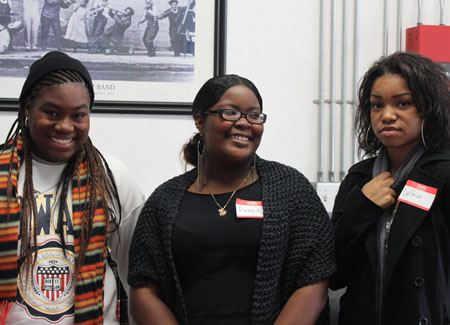 Jeena Tanks, Brandi Finney and Lafaye Mooer discuss extracurricular activities and what they see themselves doing after high school. |
Urban Media Foundation Radio Training Group 1 by Intersections
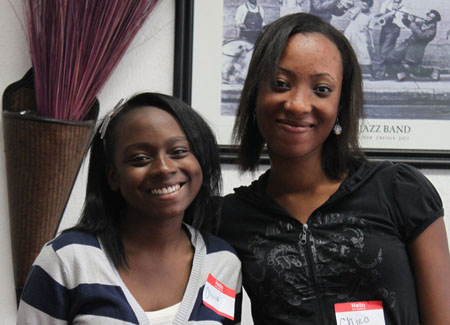 Olivia Smith and Chizo Iberosi tackle tough transitions—from moving from a big to a small school, to moving from another country entirely. |
Urban Media Foundation Radio Training Group 2 by Intersections
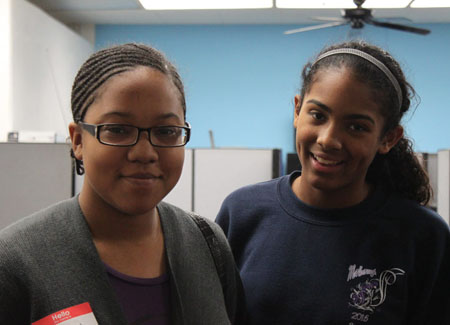 While discussing what they see for their futures, Jocelyn Foster and Bianca Alonzo discover they have a shared interest—science! |
Urban Media Foundation Radio Training Group 3 by Intersections
 Tia Halsey, Justin Tanks and Octavia Smith all know they want to go to college, they’re just not sure where. One thing they do know is who their favorite authors are – Suzanne Collins and Edgar Allan Poe make the short list. |
Urban Media Foundation Radio Training Group 4 by Intersections
 Aaron King, Kevin Soils and Jesse Gonzales may be young adults, but they’re already thinking about what kind of legacy they’d like to leave future generations. |
Urban Media Foundation Radio Training Group 5 by Intersections
The radio workshop was led by Melissa Leu and Kaitlin Parker, USC Annenberg students and Intersections South LA reporters.










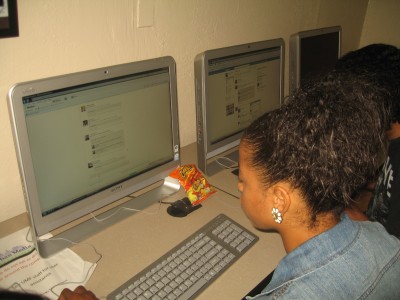 Danielle Tavasti, who has been attending the journalism training for two years and travels all the way from Long Beach with her brother Jonathan, loves the atmosphere and what she has learned along the way. “I like that they give us so many opportunities to experience journalism first hand. They took us to the USC Annenberg TV studios, where they showed us how to use cameras. That was really cool. They taught us skills we can use in any career,” referring to being able to write better and to speak in front of a camera. Danielle has even started her own website.
Danielle Tavasti, who has been attending the journalism training for two years and travels all the way from Long Beach with her brother Jonathan, loves the atmosphere and what she has learned along the way. “I like that they give us so many opportunities to experience journalism first hand. They took us to the USC Annenberg TV studios, where they showed us how to use cameras. That was really cool. They taught us skills we can use in any career,” referring to being able to write better and to speak in front of a camera. Danielle has even started her own website.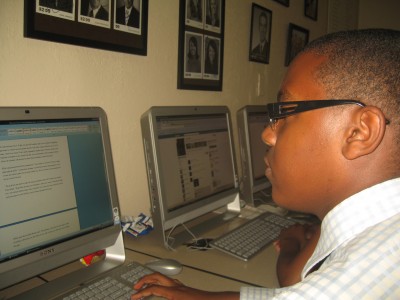 He has just graduated from high school and will be heading to Northern Arizona University in the fall to study broadcast journalism. “My dream is to be a sports reporter for ESPN.”
He has just graduated from high school and will be heading to Northern Arizona University in the fall to study broadcast journalism. “My dream is to be a sports reporter for ESPN.” 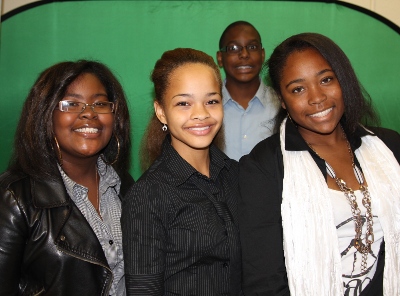 From left: Brandi Finney, Erdavria Rose Simpson, Destany Charles. In the back: Jerriel Biggles.
From left: Brandi Finney, Erdavria Rose Simpson, Destany Charles. In the back: Jerriel Biggles.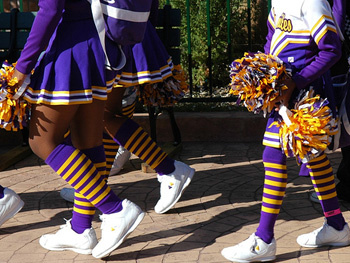 By Erdavria Simpson, Hamilton High School
By Erdavria Simpson, Hamilton High School




